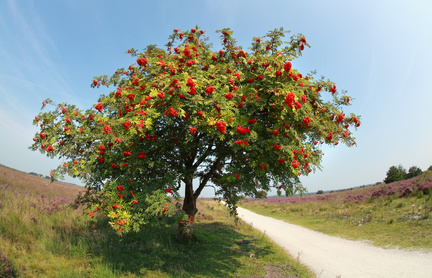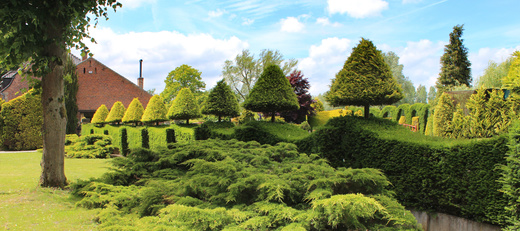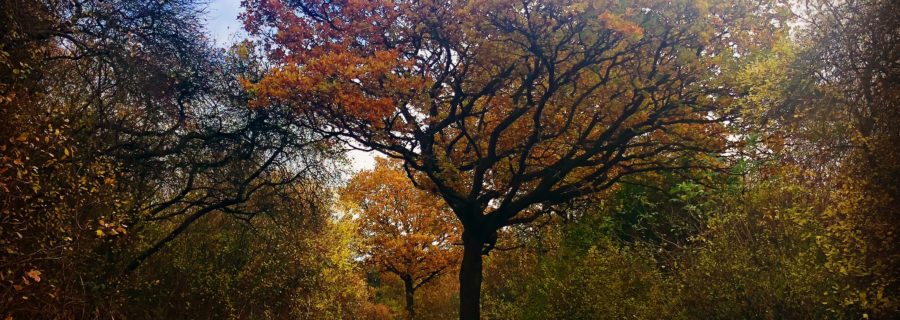A Guide to Pruning Trees in Autumn
Whilst most trees are best pruned during late winter to early spring, some do benefit from autumn pruning. Let’s take a look at which trees should be pruned during autumn, and how best to go about the task.
Pruning trees impacts upon how they will grow next year. Pruning is of benefit to trees for many reasons. It keeps them healthy, attractive and balanced, and prevents larger species from running riot.
During the autumn months, you will see most of your plants start to die back. This is their way of conserving energy over the winter when temperatures plummet, and nutrients are scarce.


Why prune trees in autumn?
For some species of plants and trees, autumn is a good time to do a little pruning. It will help them grow back stronger and sturdier, and should prevent them from shedding branches and losing their shape when forced to face the harsh winter winds and heavy frosts.
Pruning is also beneficial because it provides the opportunity to remove any damaged sections and weed out any disease before it has a chance to spread. Pruning is also good for tidying up your trees and shrubs, and it also allows more light to penetrate the space, which is something the surrounding plants will thank you for.
Before you set out with your sheers and secateurs this autumn however, it is vital that you make yourself aware of what needs pruning, and indeed what should be pruned at this time of year, because not all trees and shrubs should be trimmed during the autumn. In fact, many are better pruned during late winter to early spring. If you are unsure, consult our news pages which are filled with a number of when and how to guides on pruning various species of trees and shrubs.
What trees should be pruned in autumn?
There are a few trees that are best pruned during the autumn months.
Fruit trees
Soft and bush fruit, such as blackcurrants, redcurrants and gooseberries, will all crop more abundantly next year if you thin them out in autumn.
As soon as your summer-fruiting raspberries have fruited, you can prune out the fruited stems using secateurs. Blackcurrants, redcurrants, gooseberries and autumn-fruiting raspberries however are best left to the cooler part of autumn or even winter.
Using secateurs or loppers, cut the current season’s growth down to a pair of buds from the base.
The following fruit trees should NOT be pruned in autumn:
- Cherries and flowering cherries
- Peaches
- Apricots
- Plums
- Nectarines
Ornamental trees
If you have the likes of Sorbus or acers in your garden then you will be used to enjoying their glorious autumn colours. Once the leaves have fallen and the tree goes into its dormant phase, you can prune during late autumn (November) and early winter.
Your goal is to enhance the natural shape of the tree, whilst promoting its health by removing any diseased, dead or crossing branches.
Using scissors or a pruning saw, remove any smaller branches from the trunk. Your aim is to create a bare, clean stem of at least 90-120cm in height. If you are pruning a rowan tree which has naturally low-growing branches, then be sure to only remove the ones that are closest to the base of the tree.
Trim any diseased or dead branches, and remove any that overhang pathways. Be sensitive with your trimming; you should be aiming to thin rather than chop. Any branches that appear overcrowded can also be removed to allow light and air to get to the tree.
Always cut branches back to a healthy, outward facing bud or side shoot. If you are cutting back to the trunk, avoid cutting right up against it as this may leave the tree prone to infection. Stop your cut just short of the collar, the point where the branch meets the trunk.

Yew hedges
Hardy yews such as Taxus baccata will tolerate autumn pruning. If you are trimming your yew tree once a year, early autumn is a good time. This will keep a nice crisp shape throughout the winter. You can use hand shears, or secateurs or topiary shears for finer detail.

Newly planted trees and shrubs
Any young plants will benefit from autumn pruning. This will help to ensure they are well-shaped from the start.
Formative pruning is very important for trees as it promotes a strong framework which will support the tree in the future.
Professional help with autumn tree pruning
If you are in any way unsure as to whether your particular tree should be pruned during the autumn, or you are not clear on the correct pruning method, help is at hand.
At TH Trees we have been assisting tree owners across Essex with a range of pruning services for more than 15 years. Our experience and expertise extends across all species of trees, and there is no tree of any size that we have ever been unable to tackle.
For the professional help you need in pruning your tree this autumn, please get in touch or give us a call on 01268 642814.
Had a fallen tree in the early hours of Monday morning, called for quote and the team had it cleared on the same day. Really good communication when the lads were onsite and did a great job. Lots of pride in their work shown with the thorough clear up. Would thoroughly recommend.
Thank you Stuart for your kind review. We were glad to be able to help you with your fallen tree. If there's anything else you need in the future, please don't hesitate to get in touch.







